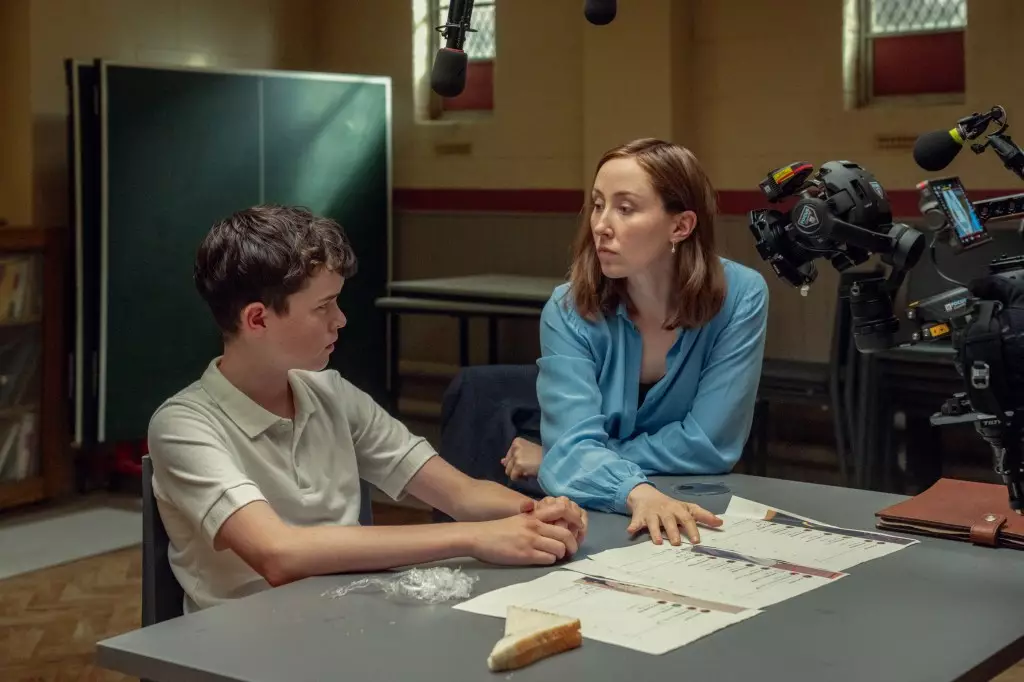In an era where streaming platforms like Netflix seem to dominate the cultural landscape, it is vital to question the implications of their ascendancy on local talent, meaningful storytelling, and societal discourse. Channel 4’s news head Louisa Compton’s bold critique highlights a fundamental issue: while streamers produce binge-worthy content, they often lack the depth and societal engagement that traditional broadcasters have cultivated over decades. Her assertion that Netflix acts as “TV tourists” underscores a growing concern that these platforms, despite their impressive viewership numbers, are fundamentally detached from the cultural and political fabric of the nation. It is a stark reminder that entertainment does not exist in a vacuum; it influences and reflects societal values.
Compton’s point about the nurturing role of Channel 4 is not merely nostalgic; it’s a plea to recognize the importance of public service broadcasters in fostering local talent and producing culturally significant content. While streamers excel at retrospective, entertainment-driven programming, they rarely tackle current social issues with the immediacy or nuance that broadcasters like Channel 4 are uniquely positioned to offer. For instance, Compton emphasizes the absence of current affairs in streaming, contrasting sharply with the vital role of PSBs in investigating stories that matter—be it geopolitical conflicts or social justice. If the industry allows the rise of platforms that favor spectacle over substance, society risks losing its capacity for critical reflection and civic engagement.
The Economics of Creativity: Co-Productions and Their Impact on British Content
Financial realities heavily influence the kind of stories that get told, and Compton’s critique points to a troubling trend: the growing reliance on co-productions driven by international funding. Netflix’s hit “Adolescence,” which has achieved remarkable success, exemplifies how big-budget productions are increasingly made possible through shared financing. However, this financial model has unintended consequences for the British creative landscape. High costs and international funding sources strain the ability of local producers to retain creative control and tell stories rooted in domestic realities.
Industry insiders like Simon Heath of World Productions voice concern that the push for international co-productions might erode the distinctiveness of British television. Instead of focusing on local narratives, producers might prioritize universally marketable content, risking a homogenization of storytelling. This shift threatens to dilute Britain’s unique cultural voice, transforming it into little more than a backdrop for international hits. The incentive structure is skewed: to secure funding, producers adapt their stories to appeal globally, which may mean sacrificing nuanced local perspectives for broader appeal. The danger is a future where the UK’s television output aligns more with international demands than with the stories that define English society.
The Future of Creativity: Striking a Balance Between Cost and Quality
The tension between cost-efficiency and high production value is perhaps the most pressing challenge for the British TV industry. Streamers push for spectacle that mimics cinematic quality, encouraging a trend toward higher budgets and more ambitious projects. However, as Heath notes, increasing costs threaten the traditional model of low-budget, high-control productions that fostered originality and innovation among smaller indie companies. This shift could potentially stifle the diversity of voices, forcing producers to chase hits rather than explore bold, uncompromising storytelling.
The debate over Channel 4’s move to establish an in-house productions unit exemplifies this dilemma. Critics like John McVay see it as an unnecessary distraction or misallocation of resources, fearing it might undermine the independent sector that has historically been the backbone of British creativity. Conversely, Compton defends the move as a necessary step to ensure the broadcaster’s sustainability and influence in the changing media landscape, asserting that a healthy Channel 4 benefits all stakeholders—audiences, creatives, and independent producers alike.
Ultimately, the question is whether British television can maintain its cultural relevance and societal role amid these economic pressures. If the industry continues to chase international funding and high-end spectacle at the expense of local storytelling and current affairs, it risks losing its identity. A recalibration—where cost, control, and cultural integrity work in concert—may be the only way to safeguard Britain’s unique television legacy in a rapidly shifting media environment.

